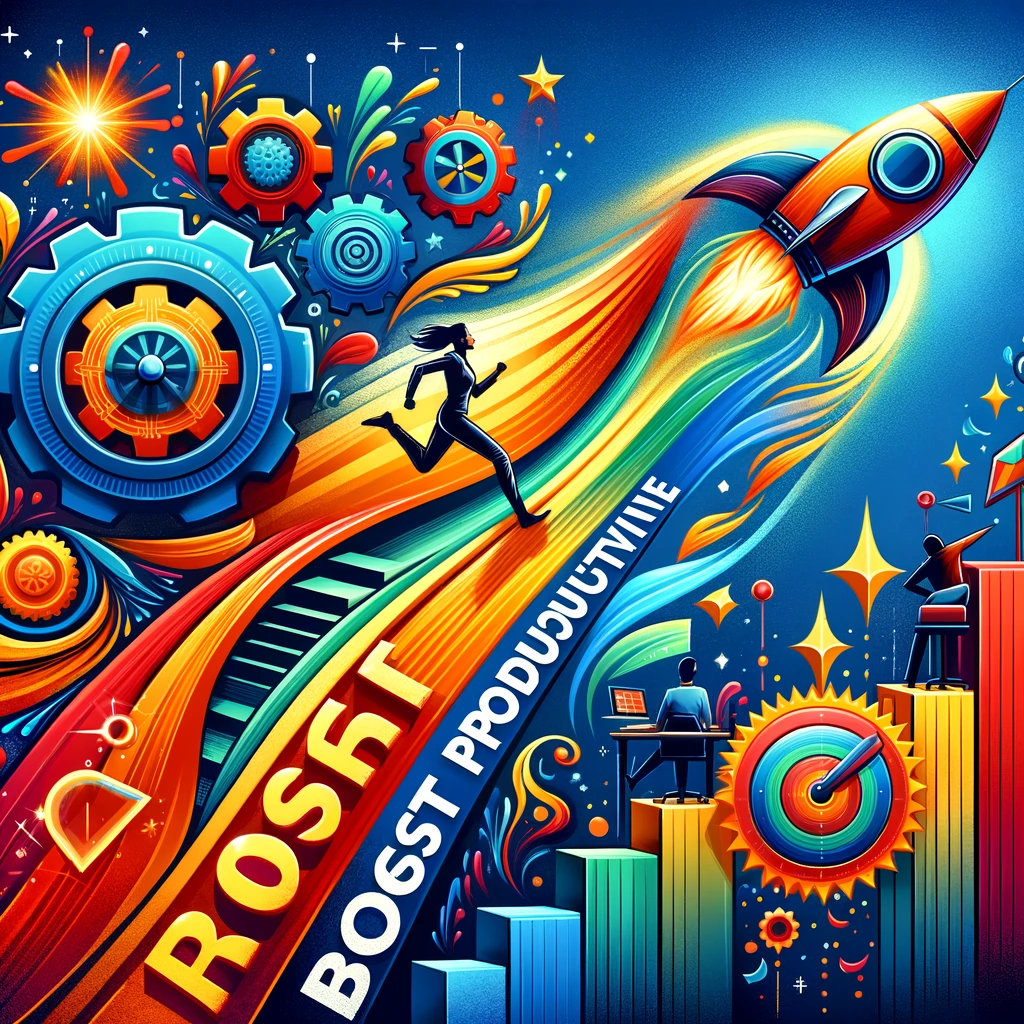In this article, we will explore practical steps and strategies to help you unlock your full potential and live a fulfilling life. Understanding your potential is crucial for personal and professional growth. It allows you to tap into your unique talents and abilities, paving the way for success and fulfillment.
To unlock your full potential, it is essential to set meaningful goals that align with your values and aspirations. By doing so, you create a clear roadmap for your journey towards success. Setting goals gives you direction and purpose, motivating you to take consistent action towards achieving them.
One powerful tool that can aid you in visualizing your goals and manifesting your dreams is a vision board. A vision board is a collage of images, words, and affirmations that represent your aspirations. By regularly visualizing your goals through your vision board, you reinforce your desires and attract opportunities that align with your vision.
Developing a growth mindset is another key aspect of unlocking your full potential. Embracing a growth mindset means believing that your abilities and intelligence can be developed through dedication and hard work. With a growth mindset, you see challenges as opportunities for growth and learning, rather than setbacks.
Cultivating self-confidence is crucial for unlocking your full potential. When you believe in yourself and your abilities, you are more likely to take risks and pursue your goals fearlessly. Building self-confidence involves recognizing your strengths, celebrating your achievements, and challenging self-limiting beliefs.
Embracing failure and building resilience are also essential for unlocking your full potential. Failure is not a sign of defeat but a stepping stone towards success. By learning from failure, extracting valuable lessons, and adapting your approach, you can bounce back stronger and more determined than ever.
Nurturing healthy habits is vital for optimizing your physical, mental, and emotional well-being. Practicing mindfulness, for example, can enhance self-awareness, reduce stress, and promote overall well-being. By incorporating healthy habits into your daily routine, you support your journey towards unlocking your full potential.
Unlocking your full potential is a lifelong journey. It requires self-reflection, goal-setting, continuous learning, and a willingness to embrace challenges and failures. By following the strategies and steps outlined in this article, you can unlock your full potential and live your best life.
Understanding Your Potential
Understanding your potential is a crucial step towards unlocking your full capabilities and living a fulfilling life. It involves recognizing your unique talents, strengths, and abilities, and harnessing them to achieve personal and professional growth.
When you understand your potential, you gain clarity about what you are capable of achieving. It allows you to set realistic goals that align with your values and aspirations, enabling you to reach your full potential. By tapping into your potential, you can unleash your creativity, innovation, and problem-solving skills, leading to greater success and satisfaction.
One effective way to understand your potential is by conducting a self-assessment. Take the time to reflect on your skills, interests, and passions. Consider what activities bring you joy and fulfillment, and identify areas where you excel. This self-reflection will provide valuable insights into your potential and help you make informed decisions about your personal and professional life.
Another important aspect of understanding your potential is recognizing that it is not fixed or limited. Your potential can grow and evolve over time. By embracing a growth mindset, you believe that you can develop and improve your abilities through dedication, effort, and continuous learning. This mindset allows you to overcome challenges, embrace new opportunities, and constantly strive for self-improvement.
In conclusion, understanding your potential is the first step towards unlocking your full capabilities and living your best life. By recognizing your unique talents, setting meaningful goals, and embracing a growth mindset, you can tap into your full potential and achieve personal and professional success.
Setting Meaningful Goals
Setting meaningful goals is essential for unlocking your full potential and living a fulfilling life. When you have clear and purposeful goals, you have a direction to strive towards, which can greatly enhance your personal and professional growth.
To set meaningful goals, start by reflecting on your values and aspirations. What is truly important to you? What do you want to achieve in different areas of your life? Take the time to identify your passions and interests, as well as the areas where you want to see growth and improvement.
Once you have a clear understanding of your values and aspirations, you can begin to set specific and achievable goals. It’s important to make your goals SMART – Specific, Measurable, Attainable, Relevant, and Time-bound. This framework ensures that your goals are well-defined and actionable.
Consider creating a table or list to organize your goals. Write down each goal, along with the steps you need to take to achieve it. Breaking your goals down into smaller, manageable tasks can make them feel less overwhelming and more attainable.
Remember, setting meaningful goals is not just about the end result, but also about the journey. Embrace the process of working towards your goals and celebrate each milestone along the way. By setting meaningful goals, you can unlock your full potential and live your best life.
Creating a Vision Board
Creating a vision board is a powerful tool that can help you visualize your goals and manifest your dreams. It serves as a visual representation of what you want to achieve and helps you stay focused and motivated on your journey towards unlocking your full potential.
To create a vision board, start by gathering materials such as a poster board or corkboard, magazines, scissors, glue, and markers. Set aside some dedicated time and find a quiet space where you can fully immerse yourself in the process.
Begin by reflecting on your goals and aspirations. What do you want to achieve in different areas of your life? It could be related to your career, relationships, health, personal growth, or any other aspect that is important to you. Write down these goals and be specific about what you want to accomplish.
Next, flip through magazines or search online for images and words that resonate with your goals. Cut out or print these images and words and arrange them on your vision board. You can also add your own drawings or affirmations that inspire and motivate you.
Once you have arranged everything on your vision board, glue them down and make sure each element is securely attached. Place your vision board in a prominent place where you will see it every day, such as your bedroom or office. Take a few moments each day to visualize yourself already achieving your goals and feel the emotions associated with that accomplishment.
A vision board serves as a constant reminder of what you are working towards and can help you stay focused on your journey. It acts as a source of inspiration and motivation, reminding you of the potential within you and the steps you need to take to turn your dreams into reality.
Developing a Growth Mindset
Developing a growth mindset is essential for unlocking your full potential and achieving success in all areas of life. It is the belief that your abilities and intelligence can be developed through dedication, hard work, and a willingness to learn. With a growth mindset, you embrace challenges, persist in the face of setbacks, and see failures as opportunities for growth.
One way to develop a growth mindset is by reframing your thoughts and beliefs about intelligence and abilities. Instead of thinking that your skills are fixed and limited, recognize that you have the capacity to learn and improve. Challenge yourself to step out of your comfort zone and take on new experiences that push you to grow.
Another effective strategy is to surround yourself with people who have a growth mindset. Seek out individuals who inspire and motivate you to reach for your full potential. Engage in conversations with them, learn from their experiences, and collaborate on projects that challenge and stretch your abilities.
Additionally, it is important to cultivate a love for learning and embrace the process of continuous improvement. Set aside time each day to engage in activities that expand your knowledge and skills. This could include reading books, taking online courses, attending workshops, or seeking mentorship from experts in your field.
Remember, developing a growth mindset is a lifelong journey. It requires consistent effort, self-reflection, and a willingness to adapt and evolve. By adopting a growth mindset, you open yourself up to endless possibilities and opportunities for personal and professional growth.
Cultivating Self-Confidence
Cultivating self-confidence is essential for unlocking your full potential and living your best life. When you believe in yourself and your abilities, you are more likely to take risks, pursue your goals, and overcome obstacles along the way. Here are some techniques and practices to help you cultivate self-confidence:
- Challenge your negative self-talk: Replace self-limiting beliefs with positive and empowering affirmations. Remind yourself of your past successes and focus on your strengths.
- Set achievable goals: Break down your larger goals into smaller, manageable tasks. Celebrate your progress and achievements along the way, boosting your confidence in your abilities.
- Step out of your comfort zone: Embrace new experiences and challenges that push you outside of your comfort zone. Each time you successfully navigate unfamiliar territory, your self-confidence grows.
- Practice self-care: Taking care of your physical, mental, and emotional well-being is crucial for building self-confidence. Prioritize activities that make you feel good and boost your self-esteem.
- Surround yourself with positive influences: Seek out supportive and encouraging individuals who believe in your potential. Their belief in you can help reinforce your own self-confidence.
Remember, self-confidence is not something that happens overnight. It is a skill that can be developed and strengthened over time. By implementing these strategies and consistently challenging yourself, you can cultivate self-confidence and unlock your full potential.
Embracing Failure and Resilience
Failure is often seen as something negative, a setback or a roadblock on the path to success. However, it is important to shift our perspective and embrace failure as a valuable learning experience. When we view failure as an opportunity for growth, we can develop resilience and bounce back stronger than before.
Resilience is the ability to adapt and recover from adversity. It is like a muscle that can be strengthened through practice and determination. When we face failure, it can be tempting to give up and let it define us. But by embracing failure, we can learn from our mistakes, make necessary adjustments, and continue moving forward towards our goals.
One way to embrace failure is by reframing our mindset. Instead of seeing failure as a reflection of our abilities, we can view it as a stepping stone towards success. Each failure brings us closer to understanding what works and what doesn’t, allowing us to refine our approach and improve our chances of success.
Another important aspect of embracing failure is being open to feedback and constructive criticism. By seeking feedback from others, we gain valuable insights and different perspectives that can help us grow and improve. It takes courage to ask for feedback and accept it with an open mind, but it is an essential part of the learning process.
In addition, it is crucial to cultivate self-compassion when facing failure. We are often our own harshest critics, but by practicing self-compassion, we can treat ourselves with kindness and understanding. Remember that failure does not define our worth or capabilities. It is simply a part of the journey towards success.
In conclusion, embracing failure and resilience is essential for unlocking our full potential and living our best lives. By shifting our mindset, seeking feedback, and practicing self-compassion, we can turn failure into an opportunity for growth and become more resilient individuals. So, let’s embrace failure, learn from it, and use it as a stepping stone towards success.
Learning from Failure
Learning from failure is an essential part of personal and professional growth. While failure may initially feel discouraging, it provides valuable lessons and opportunities for self-improvement. Instead of viewing failure as a setback, it is important to see it as a stepping stone towards success.
One effective strategy for learning from failure is to reflect on the experience and identify the lessons it has to offer. This can be done by asking yourself questions such as: What went wrong? What could I have done differently? What did I learn from this situation? By analyzing the factors that contributed to the failure, you can gain insights that will help you make better decisions in the future.
Another way to learn from failure is to seek feedback from others. This could be from mentors, colleagues, or even friends and family. By listening to different perspectives, you can gain valuable insights and alternative approaches that you may not have considered before.
It is also important to remember that failure is not a reflection of your worth or abilities. Everyone experiences failure at some point in their lives, and it is a natural part of the learning process. Embracing failure with a growth mindset allows you to see it as an opportunity for growth and self-improvement.
In conclusion, learning from failure is crucial for unlocking your full potential. By reflecting on your experiences, seeking feedback, and embracing failure with a growth mindset, you can turn setbacks into opportunities for growth and achieve your goals.
Nurturing Healthy Habits
Nurturing healthy habits is essential for optimizing your physical, mental, and emotional well-being. By incorporating positive habits into your daily routine, you can improve your overall quality of life and unlock your full potential. Here are some key strategies to help you nurture healthy habits:
- 1. Prioritize Self-Care: Make self-care a non-negotiable part of your routine. This can include activities such as exercise, getting enough sleep, eating nutritious meals, and taking time for relaxation and self-reflection.
- 2. Practice Mindfulness: Cultivate a sense of mindfulness by being fully present in the moment. Engage in activities that promote mindfulness, such as meditation, deep breathing exercises, or simply taking a walk in nature.
- 3. Maintain a Balanced Diet: Fuel your body with nourishing foods that provide the necessary nutrients and energy. Incorporate a variety of fruits, vegetables, whole grains, lean proteins, and healthy fats into your meals.
- 4. Stay Hydrated: Drink an adequate amount of water throughout the day to keep your body hydrated and functioning optimally. Limit your intake of sugary beverages and opt for water as your primary source of hydration.
- 5. Get Regular Exercise: Engage in physical activities that you enjoy and that get your heart rate up. Regular exercise not only improves your physical fitness but also boosts your mood and reduces stress.
- 6. Practice Gratitude: Cultivate a mindset of gratitude by expressing appreciation for the things you have in your life. This can be done through journaling, creating a gratitude jar, or simply verbally acknowledging the things you are grateful for.
By consistently implementing these healthy habits into your daily routine, you can create a strong foundation for personal growth and well-being. Remember, small changes can have a big impact over time, so start incorporating these habits gradually and make them a part of your lifestyle.
Practicing Mindfulness
Practicing mindfulness is a powerful technique that can greatly enhance your overall well-being and quality of life. It involves being fully present and aware of the present moment, without judgment or attachment to thoughts or emotions. By practicing mindfulness, you can cultivate a greater sense of self-awareness, reduce stress, and improve your mental and emotional health.
One effective way to practice mindfulness is through meditation. Find a quiet and comfortable space where you can sit or lie down. Close your eyes and focus your attention on your breath. Notice the sensation of each inhale and exhale, without trying to change or control it. If your mind starts to wander, gently bring your attention back to your breath. This simple practice can help calm your mind and bring about a sense of inner peace.
- Another way to incorporate mindfulness into your daily life is by engaging in everyday activities with full presence and awareness. Whether you’re eating, walking, or washing dishes, try to bring your attention to the present moment. Notice the sights, sounds, and sensations associated with each activity. By fully immersing yourself in the present moment, you can experience a greater sense of joy and appreciation for the simple things in life.
- Practicing gratitude is also a form of mindfulness. Take a few moments each day to reflect on the things you are grateful for. It could be something as small as a warm cup of coffee or a kind gesture from a friend. By focusing on the positive aspects of your life, you can shift your mindset and cultivate a greater sense of contentment and happiness.
Remember, mindfulness is a skill that takes time and practice to develop. Start with small steps and gradually incorporate mindfulness into your daily routine. By making mindfulness a regular part of your life, you can unlock a deeper level of self-awareness and live a more fulfilling and meaningful life.



